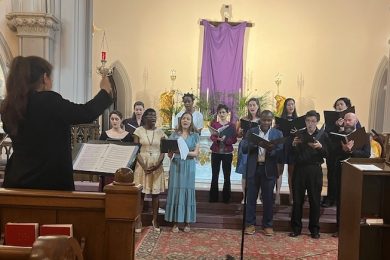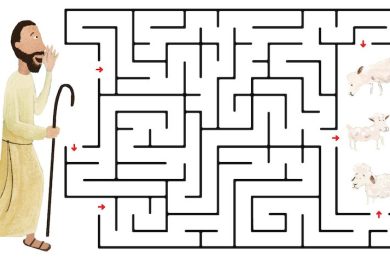The phone call jarred me awake at 6:20 a.m. I am not a morning person and because there have been so many robocalls lately, I did not immediately spring up to answer. However, because family members live quite a distance away, I found myself wondering if it was an important call that I had disregarded, so, reluctantly, I stayed awake and began the day.

Yet, my mind was far from placated by morning prayer and routine. Quiet and peace, once rudely disturbed, are hard-pressed to return! It was a very good thing that this time, as so many times in the past, a purposeful focus on faith helped me return to a better frame of mind.
That day, I happened to be reading some texts about the early church and, specifically, some of the “desert fathers,” whose monastic, ascetic practices and deep prayer often took them far into the Egyptian desert. Quiet certainly abounded there.
But there was also much “internal noise.” Temptations, disruptions, even arguments with others, and this had to be grappled with. One example caught my attention — as surely as the robocaller’s attempt to roust me — and offered some good guidance.
A monk shared the story of St. (or Abba) John the Dwarf, who went to church at Scetis, a large settlement of desert Christians. Abba John heard “brethren arguing” in church, so he left it, intending to return to his cell. But instead of going right into the solitude, he first walked around the cell three times. Only after the third time did he go in.
The behavior seemed unusual to other monks, who wondered why Abba John hadn’t gone straight into his cell. In response to their questions, the writer says that Abba John said, “My ears were full of that argument, so I circled round in order to purify them, and thus I entered my cell with my mind at rest.”
Several aspects of the long-ago monk’s approach to regaining inner quiet struck a chord with me. Abba John distanced himself from the argument, the “noise,” around him, something that I, at least, sometimes forget is an option.
The television remote can seem to be on permanent mode, or the sales spiel from someone we encounter might seem hard to get away from. Yet, with kindness but firmness, the “off” button is at hand, the “noisy” conversation can be ended.
We can walk away, stop the flow of angry or insistent rhetoric, turn the ringer of the phone off or, at least, not take random robocalls personally. We can be nurturers of the quiet we so dearly want.
Another useful piece of wisdom from Abba John is how important it is that to separate our place of calm from the noise might take some effort. The monk did not enter his cell right away, but with the simple, physical action (walking), he put distance between himself and the disturbance.
The remnants of the argument dissipated. His mind was able to rest, to be still. Home could be approached and entered in peace.
The need for self-awareness in cultivating quiet comes through the monk’s tale, too. Not only does it help to identify the origin of the noise that is rattling us, but by considering how the intrusion affects us, we can do the things we need to do to protect our inner calm.
Practice distance from the intrusion. Go to prayer, Eucharist, the sacrament of reconciliation. “Visit” with other Christians, from however long ago, to learn from them how they dealt with similar situations.
Walk around the block until peace emerges and with it, blessed quiet inside and out!
Maureen Pratt’s website is www.maureenpratt.com
Top photo: Adobe Stock





















